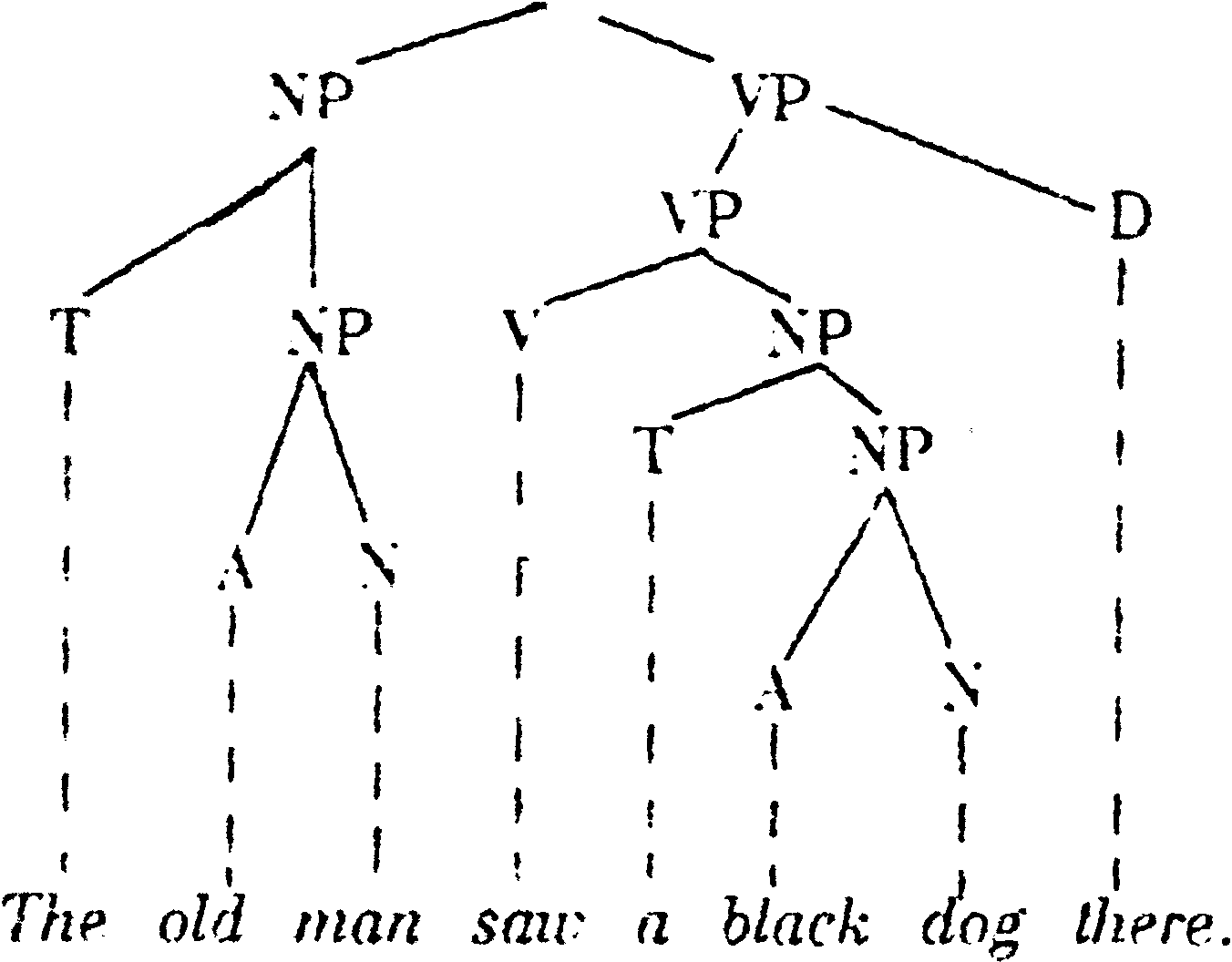
Sentence. Syntactic Structure. Models of Analysis
1. The model of parts of the sentence.
2. The distributional model. The model of immediate constituents
(IC-model).
3. The transformational model (TM).
1. In order to state general rules of sentence construction it is necessary to refer to smaller units. The process of analyzing sentences into their parts, or constituents, is known as parsing.
The syntactic structure of the sentence can be analyzed at two levels:
pre-functional (constituents are words and word-groups) and functional (constituents are parts of the sentence).
Parts of the sentence are notional sentence constituents, which are in certain syntactic relations to other constituents or to the sentence as a whole. Accordingly we distinguish between principal parts of the sentence, constituting the predication, or the basic structure of the sentence, and secondary parts of the sentence, extending, or expanding the basic structure.
Parts of the sentence are notional constituents as they name elements of events, or situations denoted by the sentence; actions or states, different participants and circumstances. The formal properties of parts of the sentence are the type of syntactic relations and the morphological expression.
Principal parts of the sentence are interdependent. The subject is the structural centre of the sentence — the predicate agrees with the subject in person and number. The predicate is the semantic and communicative centre of the sentence.
Secondary parts of the sentence are modifiers of principal and other
secondary parts: attributes are noun-adjuncts, objects and adverbial modifiers are primarily verb-adjuncts,
Structurally parts of the sentence may be of three types: simple, expressed by words and phrases; compound, consisting of the structural and notional part (compound verbal and nominal predicate, subject with the introductory it and there; complex, expressed by secondary predications (typical of secondary parts of the sentence).
As there is no direct correspondence between units of different levels of
sentence structure and as grammatical phenomena have fuzzy (not distinct) boundaries which often overlap, there are difficulties in distinguishing between certain parts of the sentence:
(1) I want to leave (object or part of the predicate?)
(2) Features of her mother and father were blended in her face (adverbial modifier or prepositional object?)
(3) He was happy to see me (object or part of the predicate?)
(4) A cup of tea (object or attribute?)
Besides the three traditional secondary parts, two more are singled out: the apposition and the objective predicative. (They painted the door green). Objective predicative is co-referential with the object, subjective predicative is co-referential with the subject (The door is green). Both types are denoted by the term complement. This term may be also used to denote all verb-adjuncts.
So the model of parts of the sentence shows the basic relations of notional sentence constituents. It does not, however, show the linear order of constituents. The order of constituents is shown by two models of analysis worked out by the American school of structural (descriptive) linguistics: the distributional model and the model of immediate constituents (I C-model). These models analyze the sentence structure at the pre-functional level.
2. Methods of structural linguistics are based on the notions of position, co-occurrence and substitution (substitutability).
Position, or environment is the immediate neighbourhood of the element.
Co-occurence means that words of one class permit or require the occurrence of words of another class.
The total set of environments of a certain element is its distribution. The term distribution denotes the occurrence of an element relative to other elements.
The distributional model, worked out by Ch. Fries (“The Structure of English”), shows the linear order of sentence constituents (see Topic XI). The syntactic structure of the sentence is presented as a sequence of positional classes of words:
The old man saw a black dog there.
1) D A1 N1 V D A2 N2 Adv
2) D 3a 1a 2 D 3b 1b 4
Showing the linear order of classes of words (their forms may also be indicated), the model does not show the syntactic relations of sentence constituents. The sentence I saw a man with a telescope is ambiguous, but the ambiguity cannot be shown by the distributional model. This drawback is overcome by the IC-model.
A sentence is not a mere sequence, or string of words, but a structured string of words, grouped into phrases. So sentence constituents are words and word-groups. The basic principle for grouping words into phrases (endo- or exocentric) is cohesion, or the possibility to substitute one word for the whole group without destroying the sentence structure. Applying the substitution test, (or the dropping test, dropping optional elements) we define syntactic relations and can reduce word-groups to words and longer sentences to basic structures:
(1) NP—N poor John — John
The phrase is endocentric, the adjunct poor is optional, the. head -word John is obligatory.
(2) The old man saw a black dog there.
Word-groups are reduced to head-words and the sentence is reduced to the basic structure, directly built by two immediate constituents — NP and VP.
When we know the rules of reducing the sentence to the basic elementary structure, it is not difficult to state the rules of extending/expanding elementary sentences:
S—NP + VP
NP—A + N
VP—V + D (Adv)
So the sentence is built by two immediate constituents (NP+VP), each of which may have constituents of its own. Constituents, which cannot be further divided, are called ultimate (UC). The IC-model exists in two main versions: the analytical model and the derivation tree. The analytical model divides the sentence into IC-s and UC-s:
The derivation tree shows the syntactic dependence of sentence constituents:
S

The sentence:
